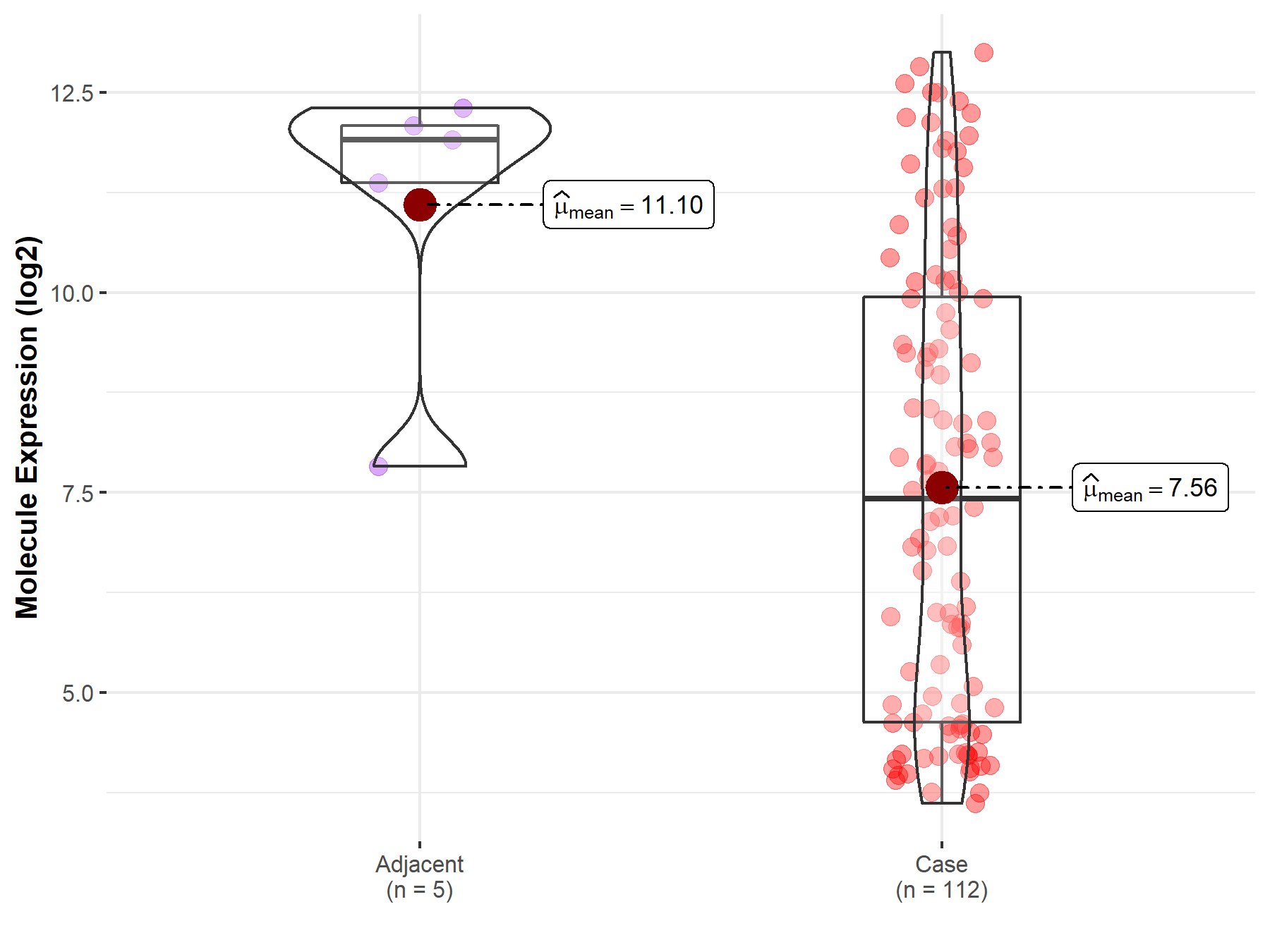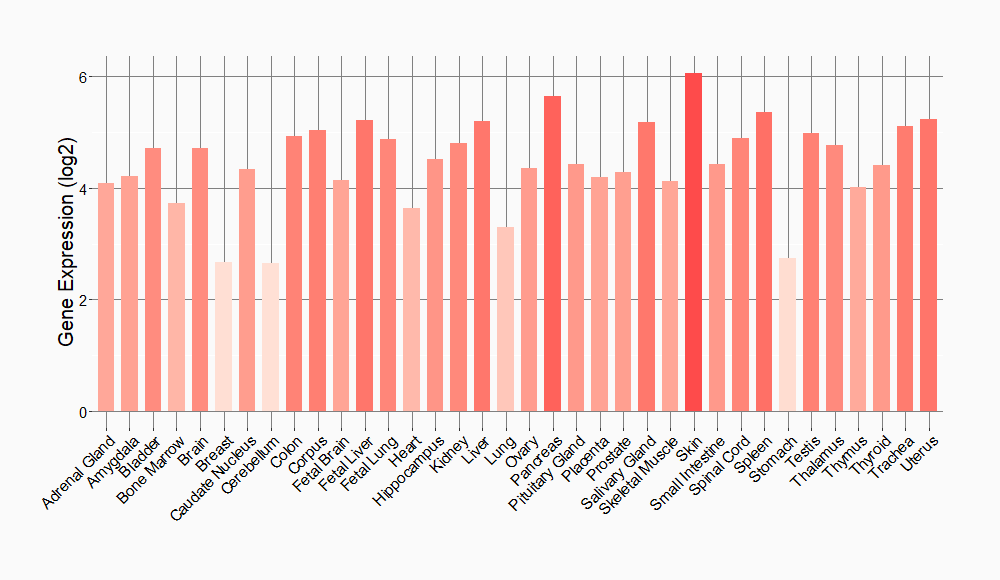Molecule Information
General Information of the Molecule (ID: Mol00182)
| Name |
Transmembrane protease serine 11E (TM11E)
,Homo sapiens
|
||||
|---|---|---|---|---|---|
| Synonyms |
Serine protease DESC1; Transmembrane protease serine 11E2; DESC1; TMPRSS11E2; UNQ742/PRO1461
Click to Show/Hide
|
||||
| Molecule Type |
Protein
|
||||
| Gene Name |
TMPRSS11E
|
||||
| Gene ID | |||||
| Location |
chr4:68447463-68497604[+]
|
||||
| Sequence |
MMYRPDVVRARKRVCWEPWVIGLVIFISLIVLAVCIGLTVHYVRYNQKKTYNYYSTLSFT
TDKLYAEFGREASNNFTEMSQRLESMVKNAFYKSPLREEFVKSQVIKFSQQKHGVLAHML LICRFHSTEDPETVDKIVQLVLHEKLQDAVGPPKVDPHSVKIKKINKTETDSYLNHCCGT RRSKTLGQSLRIVGGTEVEEGEWPWQASLQWDGSHRCGATLINATWLVSAAHCFTTYKNP ARWTASFGVTIKPSKMKRGLRRIIVHEKYKHPSHDYDISLAELSSPVPYTNAVHRVCLPD ASYEFQPGDVMFVTGFGALKNDGYSQNHLRQAQVTLIDATTCNEPQAYNDAITPRMLCAG SLEGKTDACQGDSGGPLVSSDARDIWYLAGIVSWGDECAKPNKPGVYTRVTALRDWITSK TGI Click to Show/Hide
|
||||
| Function |
Serine protease which possesses both gelatinolytic and caseinolytic activities. Shows a preference for Arg in the P1 position.
Click to Show/Hide
|
||||
| Uniprot ID | |||||
| Ensembl ID | |||||
| HGNC ID | |||||
| Click to Show/Hide the Complete Species Lineage | |||||
Type(s) of Resistant Mechanism of This Molecule
Drug Resistance Data Categorized by Drug
Approved Drug(s)
2 drug(s) in total
| Drug Sensitivity Data Categorized by Their Corresponding Mechanisms | ||||
|
|
||||
| Disease Class: Esophageal squamous cell carcinoma | [1] | |||
| Sensitive Disease | Esophageal squamous cell carcinoma [ICD-11: 2B70.3] | |||
| Sensitive Drug | Cisplatin | |||
| Molecule Alteration | Expression | Up-regulation |
||
| Experimental Note | Revealed Based on the Cell Line Data | |||
| Cell Pathway Regulation | Cell viability | Inhibition | hsa05200 | |
| DESC1/EGFR/AKT signaling pathway | Regulation | hsa04012 | ||
| In Vitro Model | KYSE30 cells | Esophagus | Homo sapiens (Human) | CVCL_1351 |
| EC9706 cells | Esophagus | Homo sapiens (Human) | CVCL_E307 | |
| KYSE140 cells | Esophagus | Homo sapiens (Human) | CVCL_1347 | |
| TE13 cells | Esophageal | Homo sapiens (Human) | CVCL_4463 | |
| In Vivo Model | Nude mouse xenograft model | Mus musculus | ||
| Experiment for Molecule Alteration |
Western blot analysis | |||
| Experiment for Drug Resistance |
MTT assay | |||
| Mechanism Description | TUSC7 suppressed the proliferation and chemotherapy resistance of ESCC cells by increasing DESC1 expression via inhibiting miR-224. | |||
| Drug Sensitivity Data Categorized by Their Corresponding Mechanisms | ||||
|
|
||||
| Disease Class: Esophageal squamous cell carcinoma | [1] | |||
| Sensitive Disease | Esophageal squamous cell carcinoma [ICD-11: 2B70.3] | |||
| Sensitive Drug | Fluorouracil | |||
| Molecule Alteration | Expression | Up-regulation |
||
| Experimental Note | Revealed Based on the Cell Line Data | |||
| Cell Pathway Regulation | Cell viability | Inhibition | hsa05200 | |
| DESC1/EGFR/AKT signaling pathway | Regulation | hsa04012 | ||
| In Vitro Model | KYSE30 cells | Esophagus | Homo sapiens (Human) | CVCL_1351 |
| EC9706 cells | Esophagus | Homo sapiens (Human) | CVCL_E307 | |
| KYSE140 cells | Esophagus | Homo sapiens (Human) | CVCL_1347 | |
| TE13 cells | Esophageal | Homo sapiens (Human) | CVCL_4463 | |
| In Vivo Model | Nude mouse xenograft model | Mus musculus | ||
| Experiment for Molecule Alteration |
Western blot analysis | |||
| Experiment for Drug Resistance |
MTT assay | |||
| Mechanism Description | TUSC7 suppressed the proliferation and chemotherapy resistance of ESCC cells by increasing DESC1 expression via inhibiting miR-224. | |||
Disease- and Tissue-specific Abundances of This Molecule
ICD Disease Classification 02

| Differential expression of molecule in resistant diseases | ||
| The Studied Tissue | Esophagus | |
| The Specified Disease | Esophageal cancer | |
| The Expression Level of Disease Section Compare with the Adjacent Tissue | p-value: 1.04E-02; Fold-change: -4.49E+00; Z-score: -2.41E+00 | |
|
Molecule expression in the normal tissue adjacent to the diseased tissue of patients
Molecule expression in the diseased tissue of patients
|
||
| Disease-specific Molecule Abundances |

|
Click to View the Clearer Original Diagram |
Tissue-specific Molecule Abundances in Healthy Individuals


|
||
References
If you find any error in data or bug in web service, please kindly report it to Dr. Sun and Dr. Zhang.
